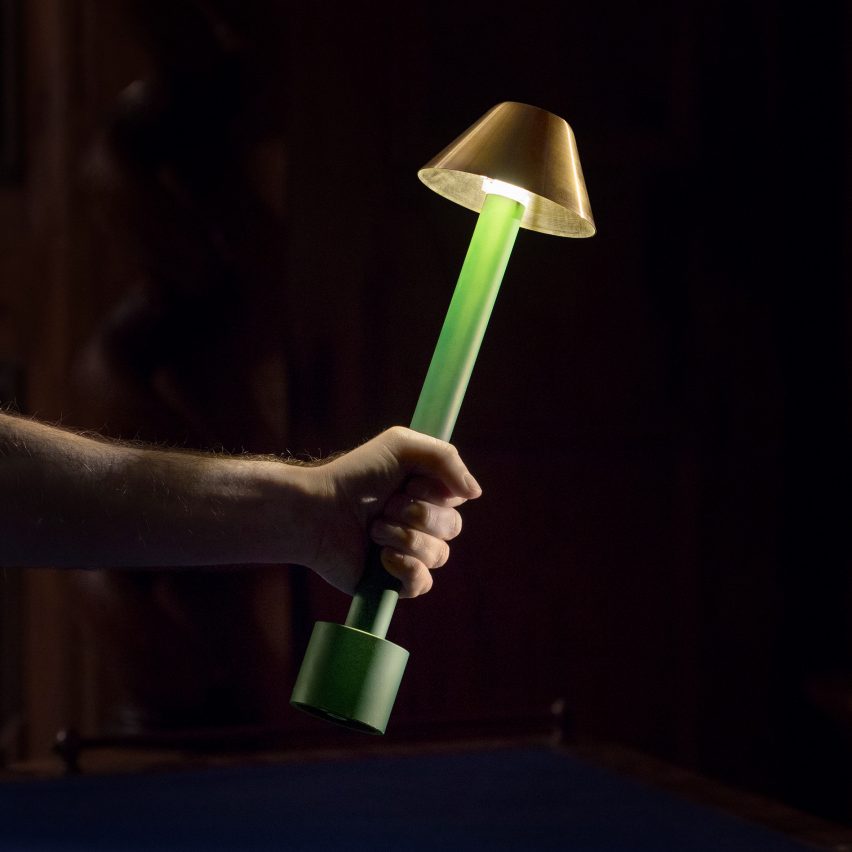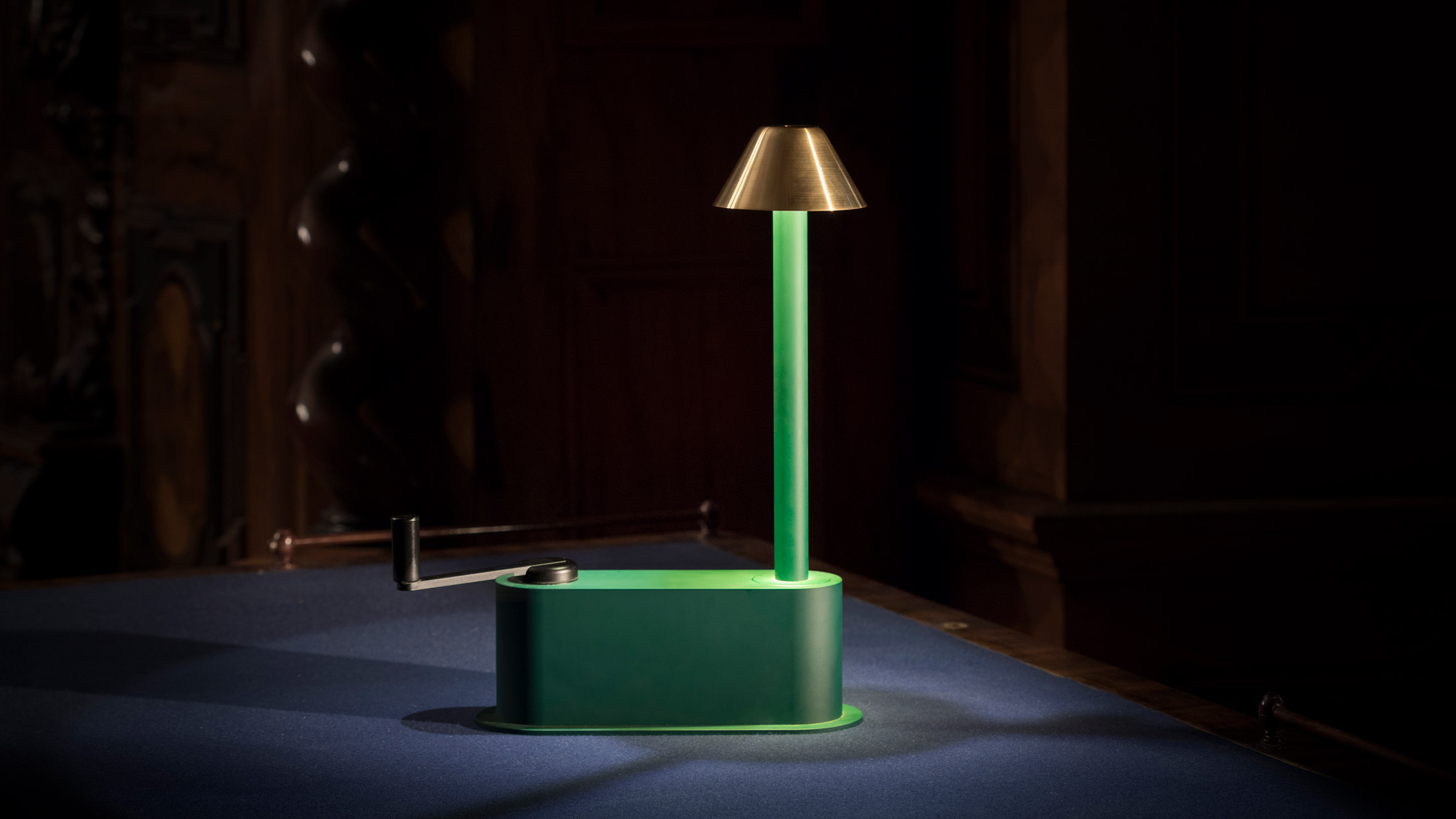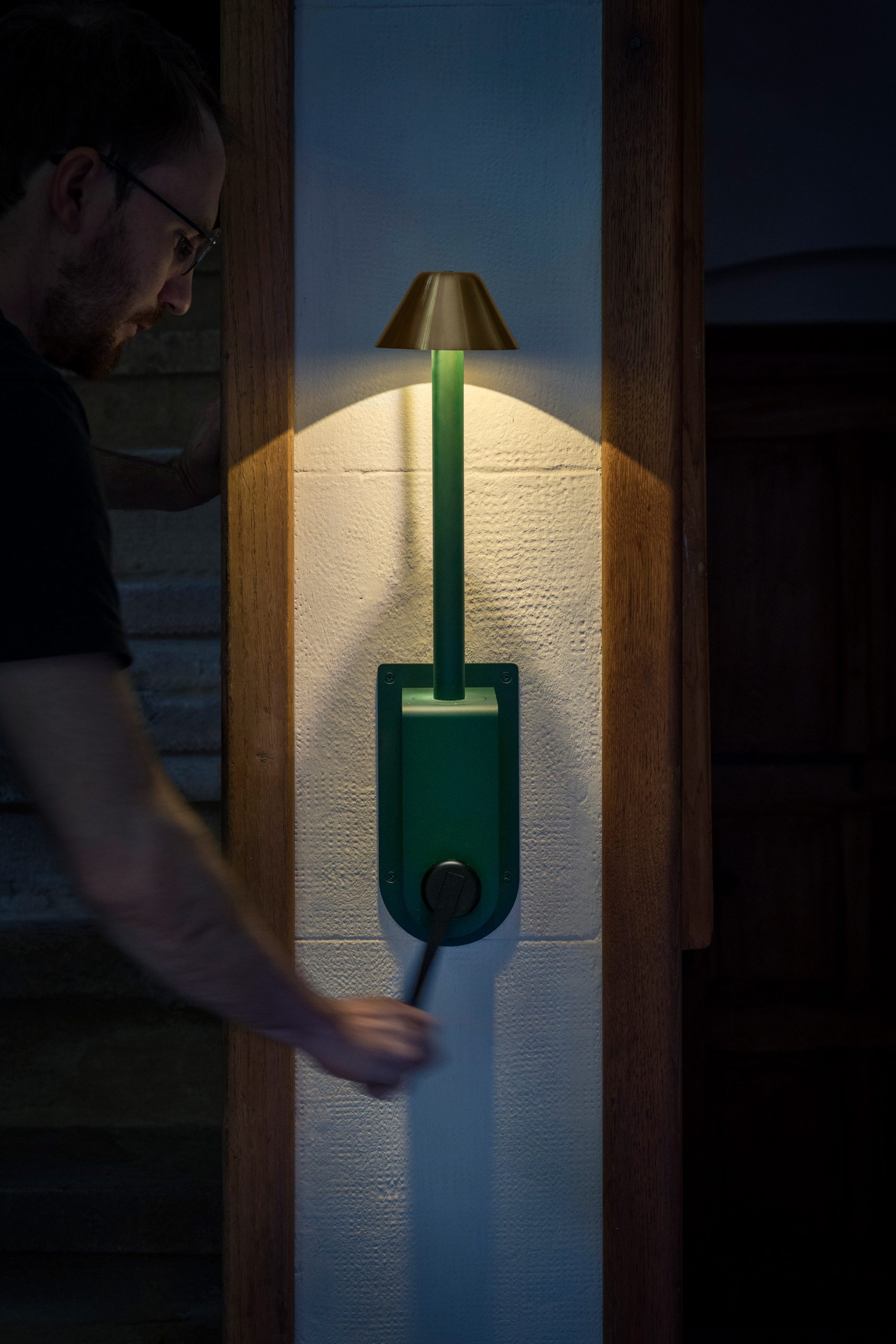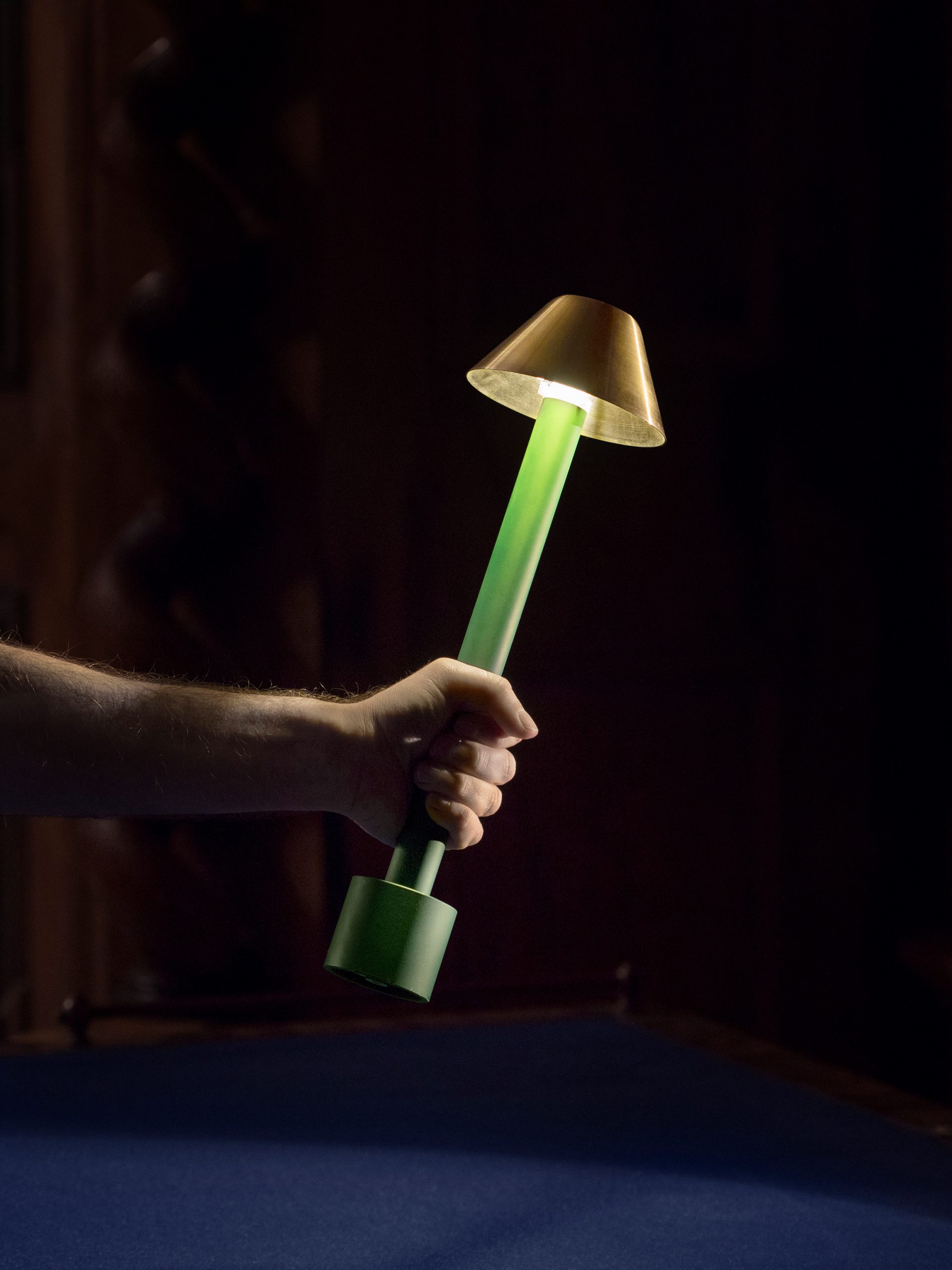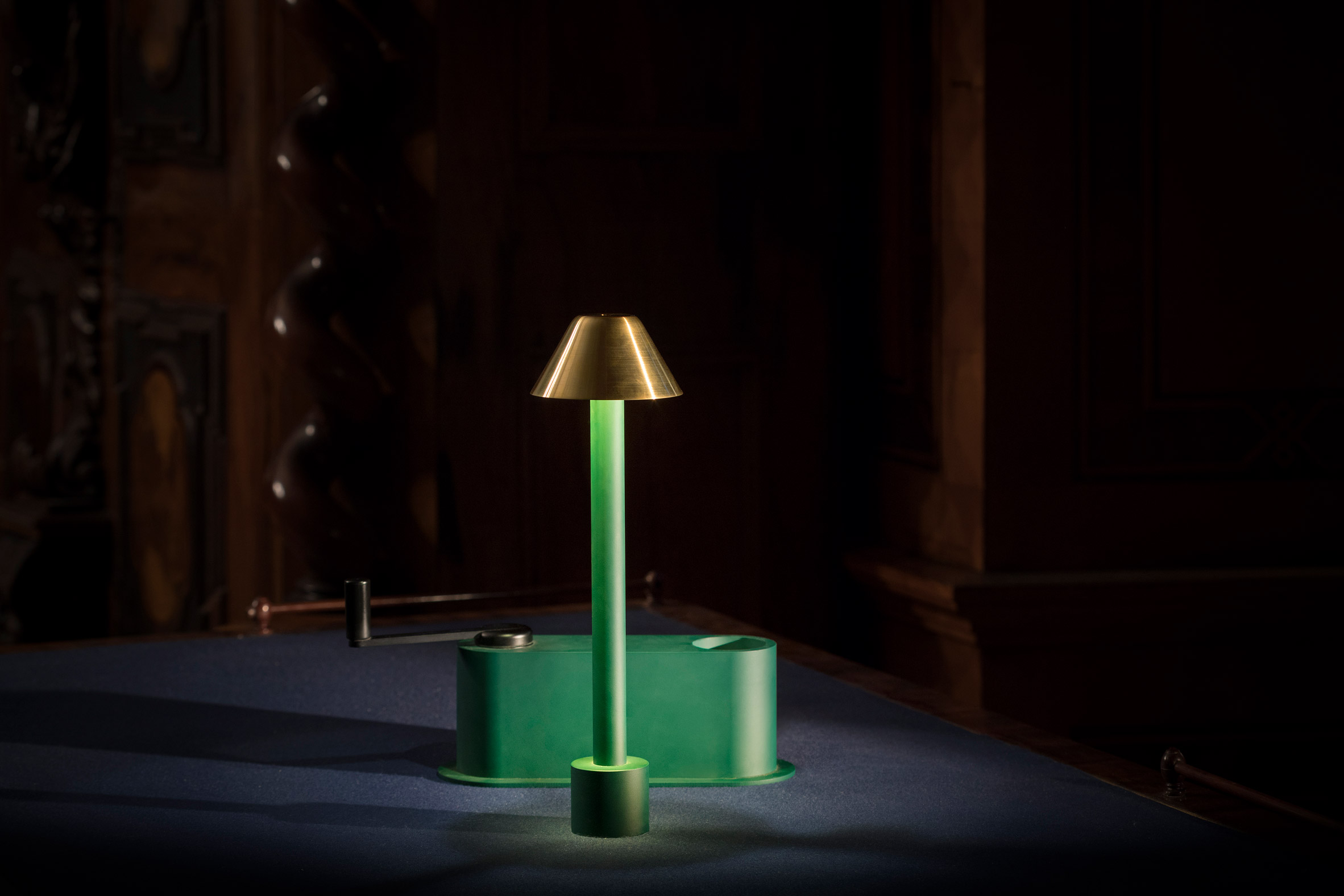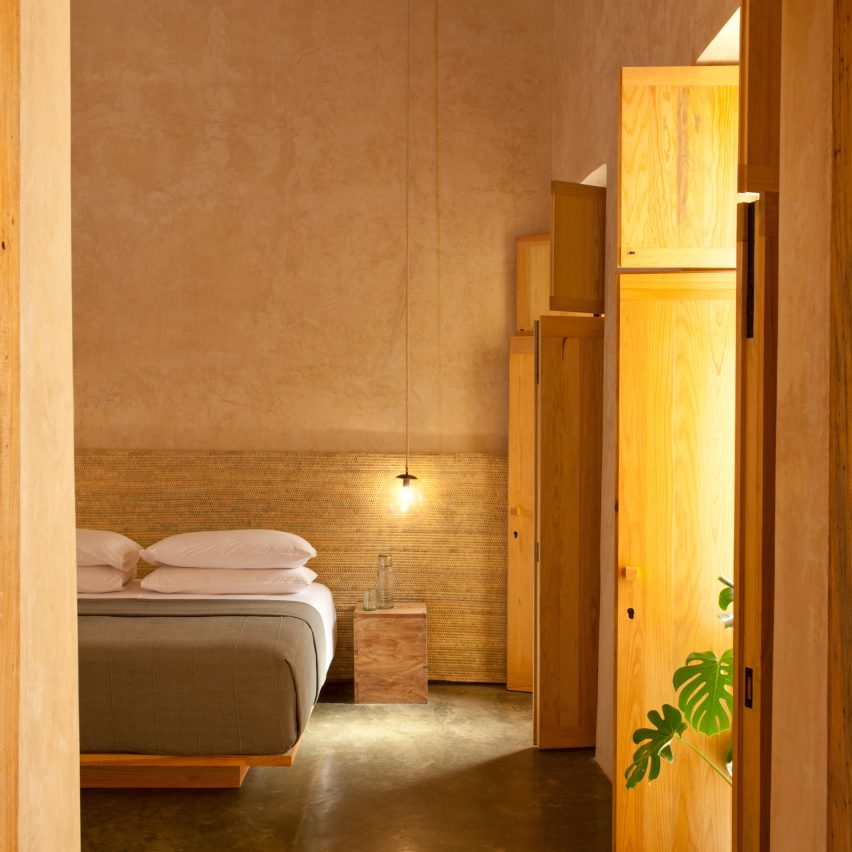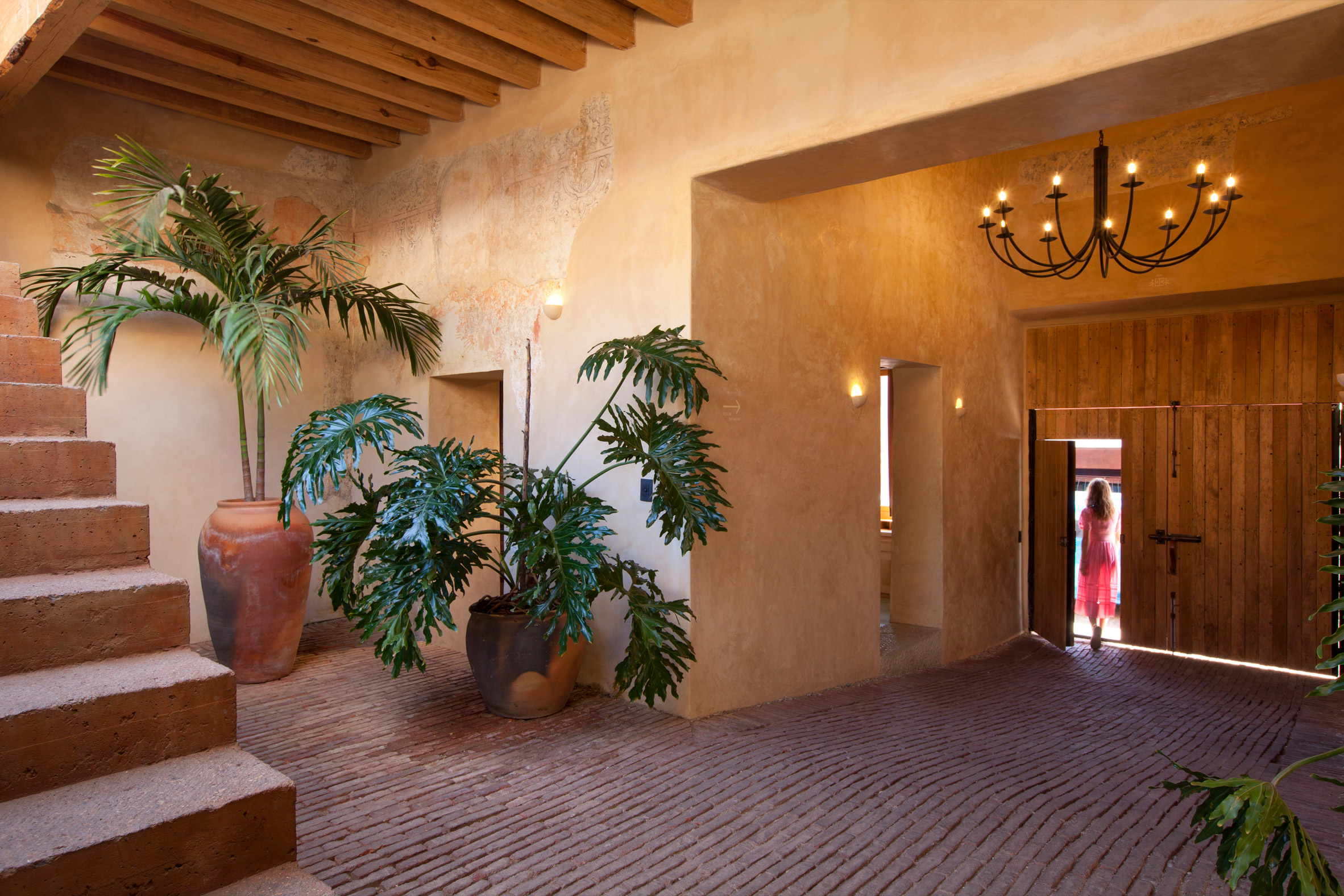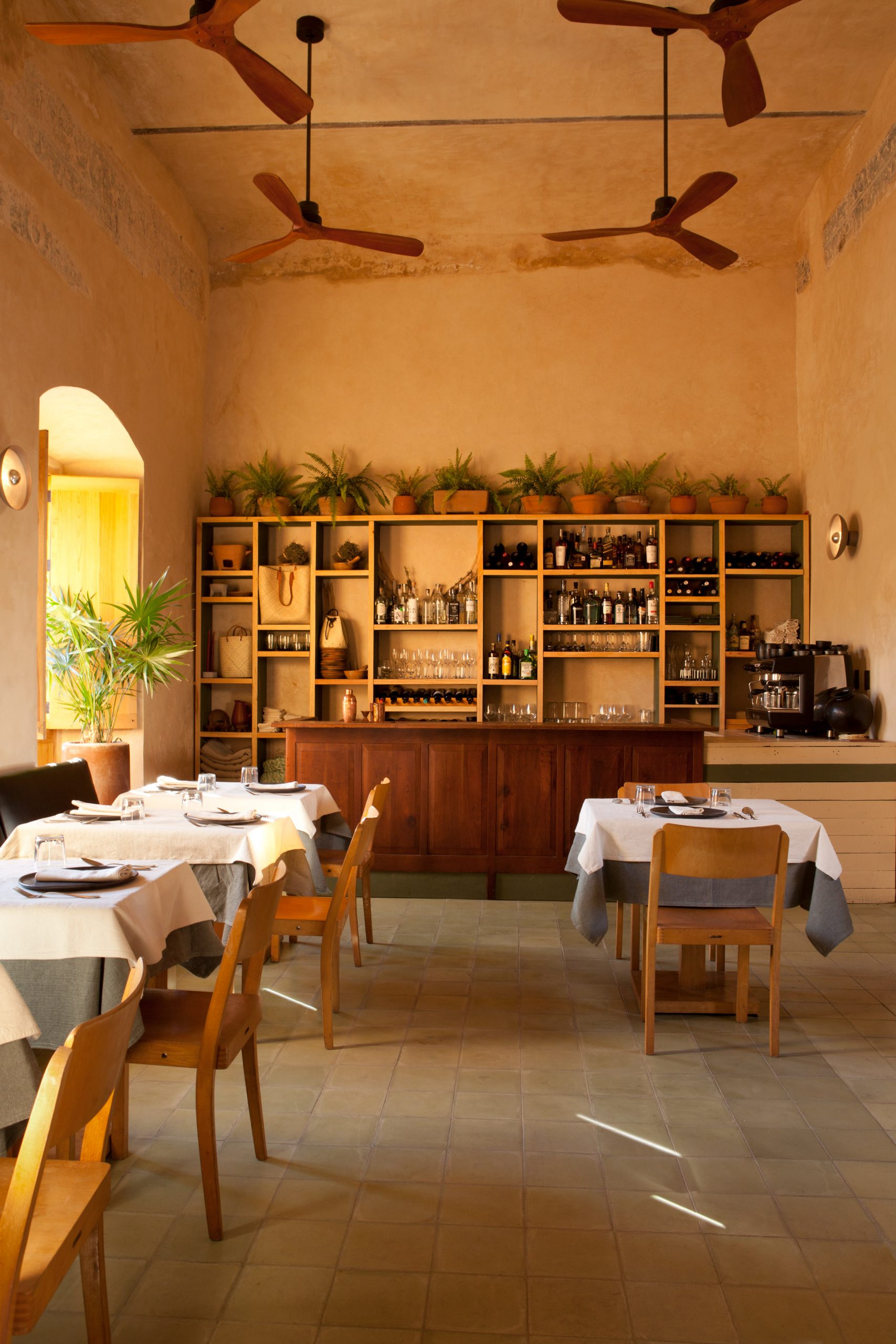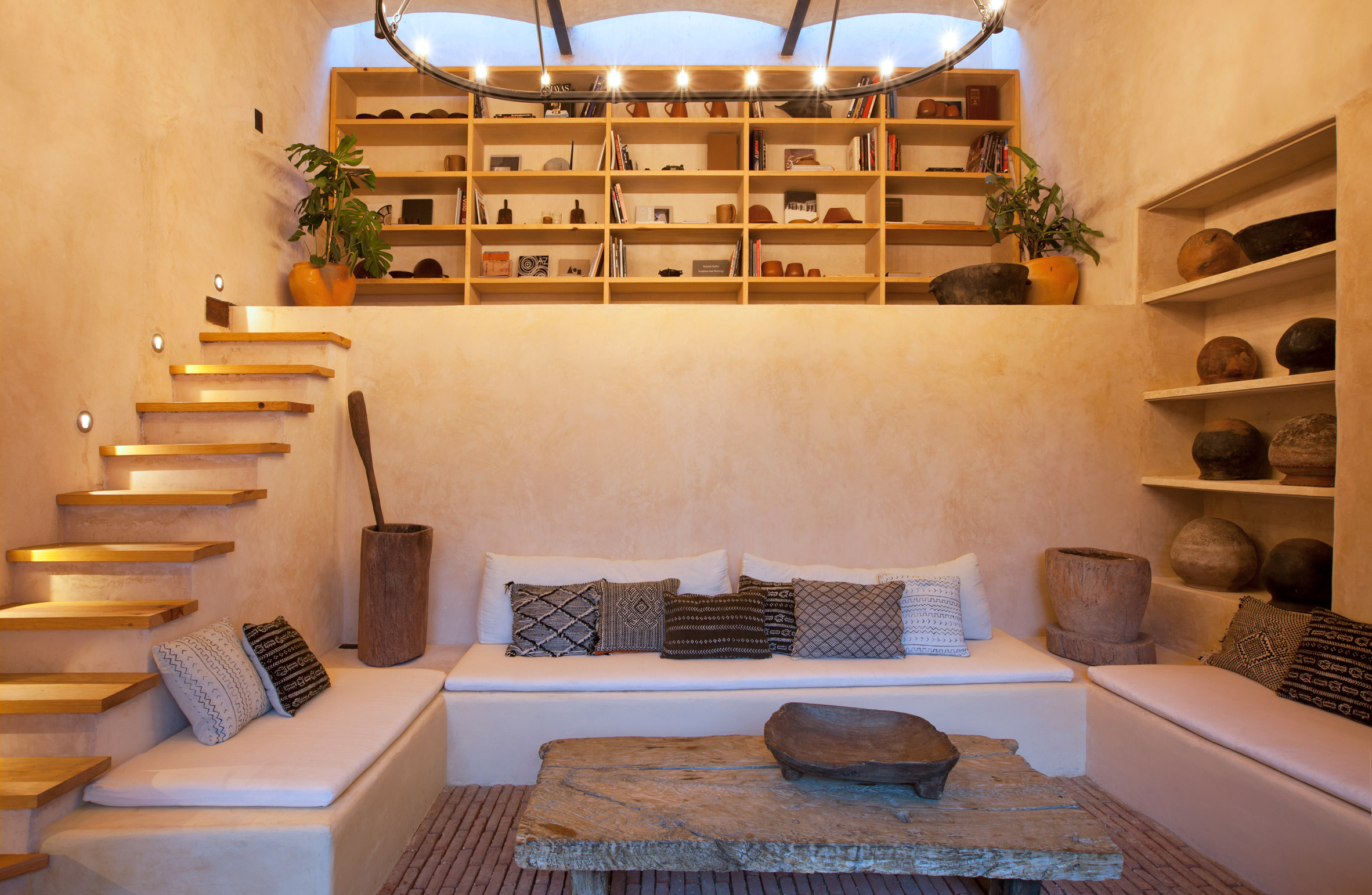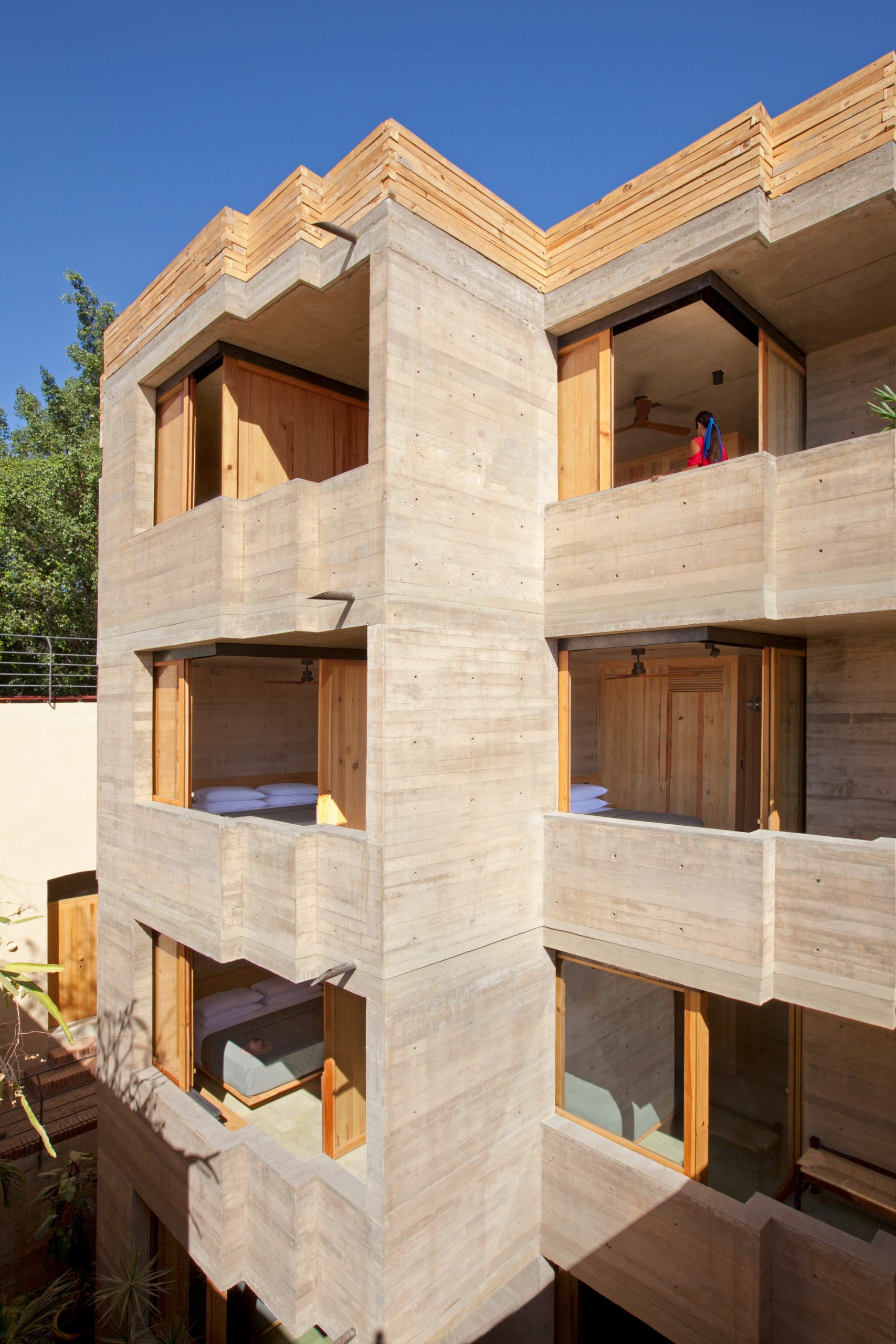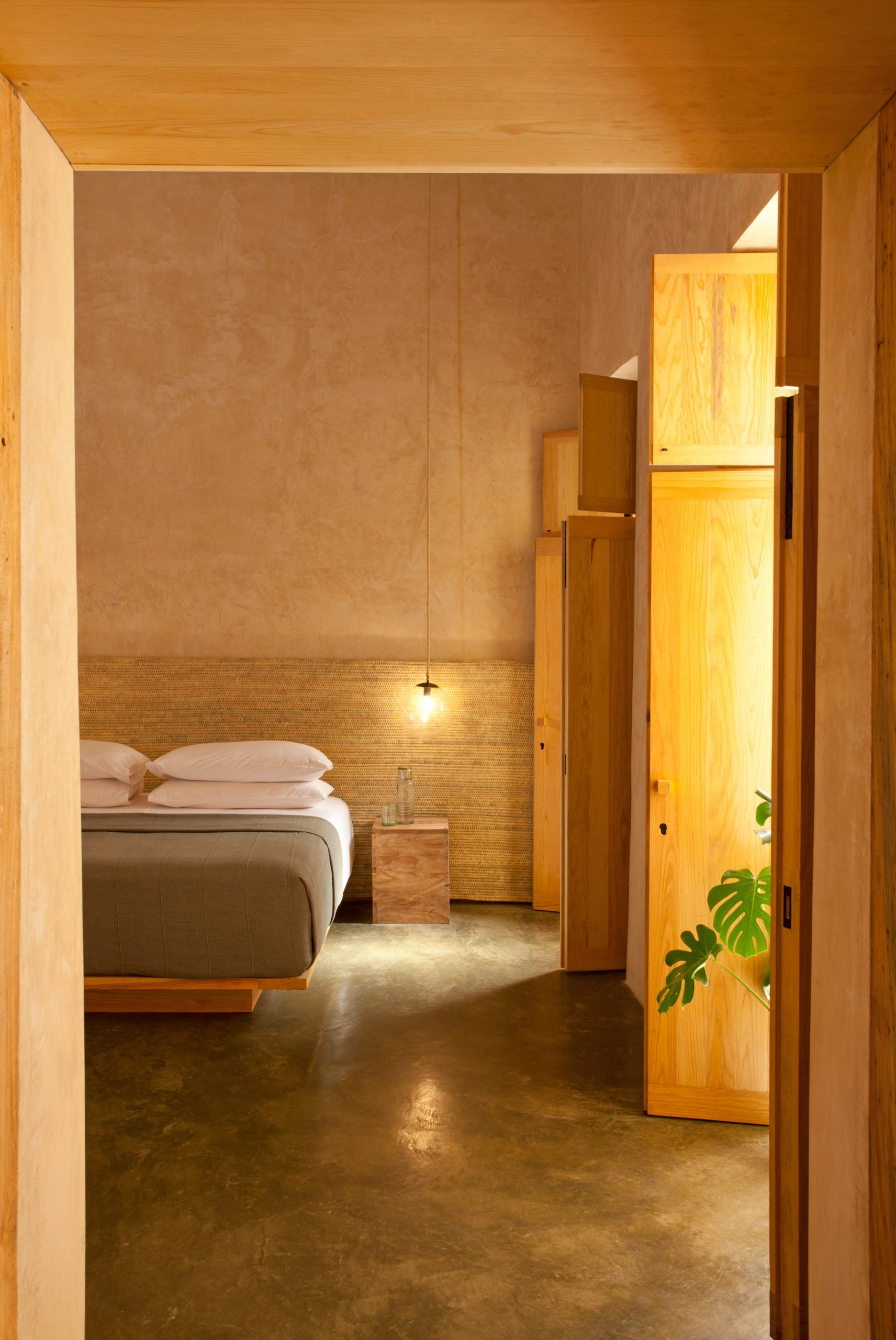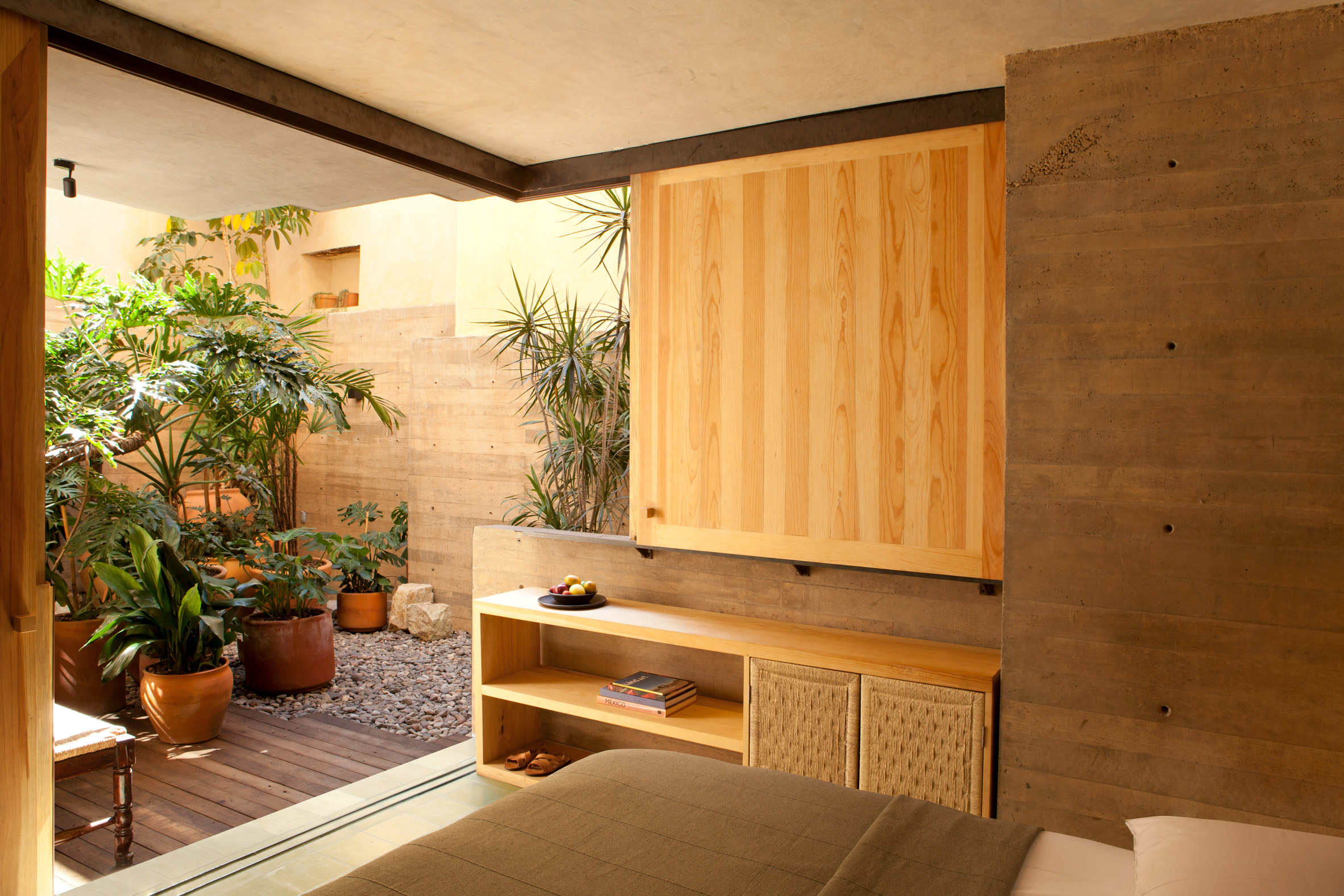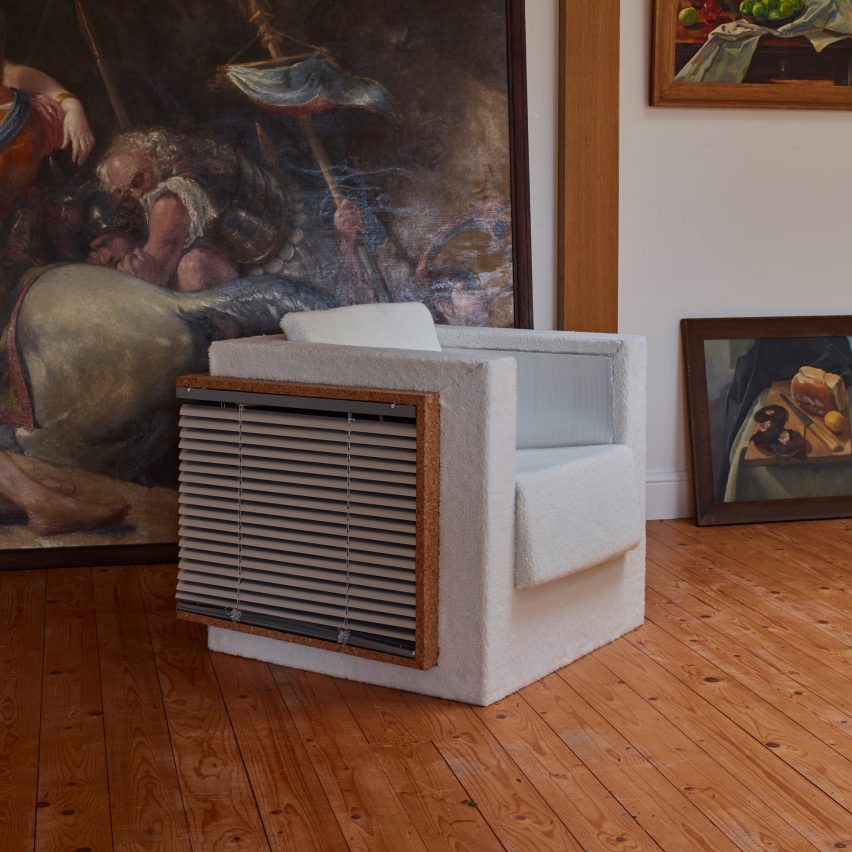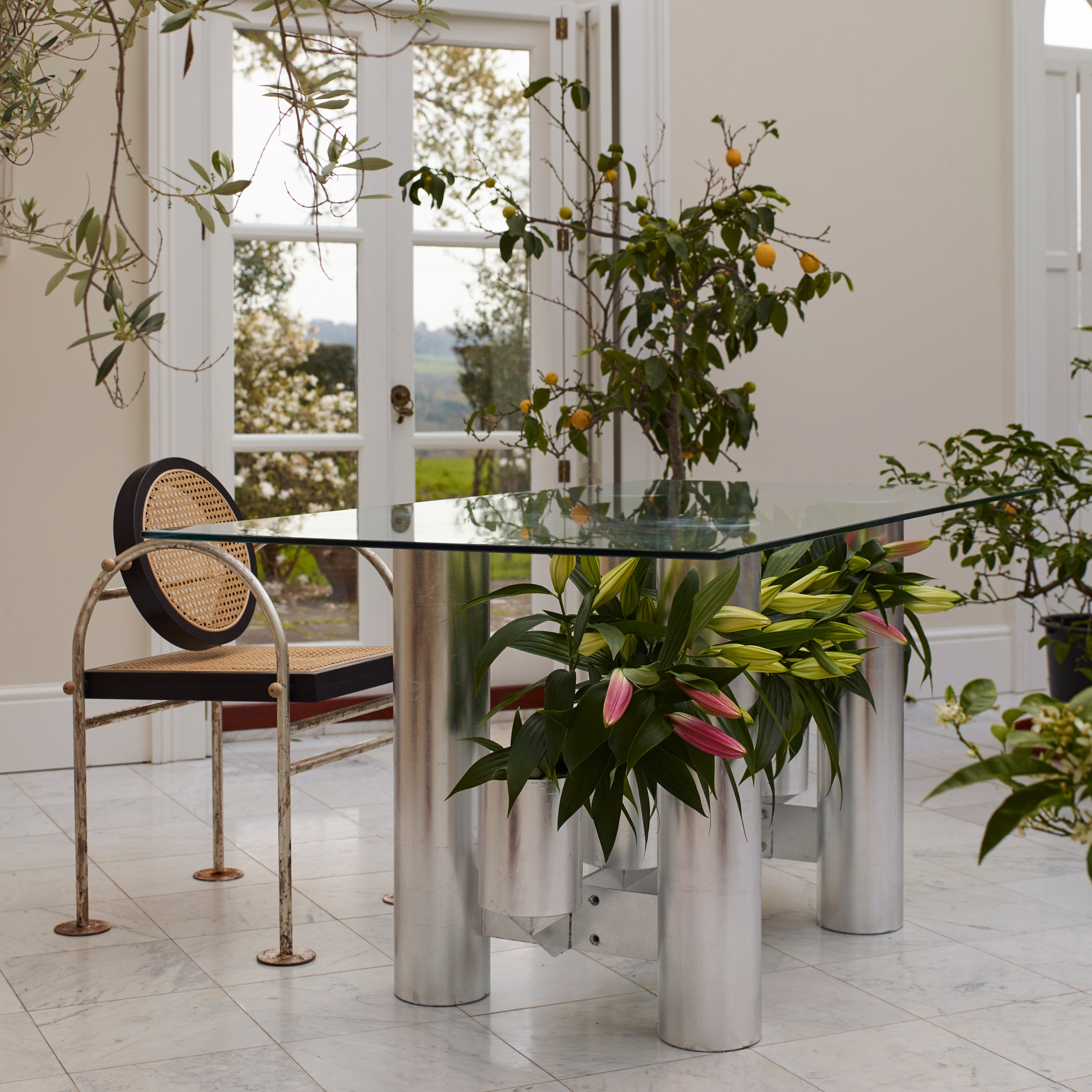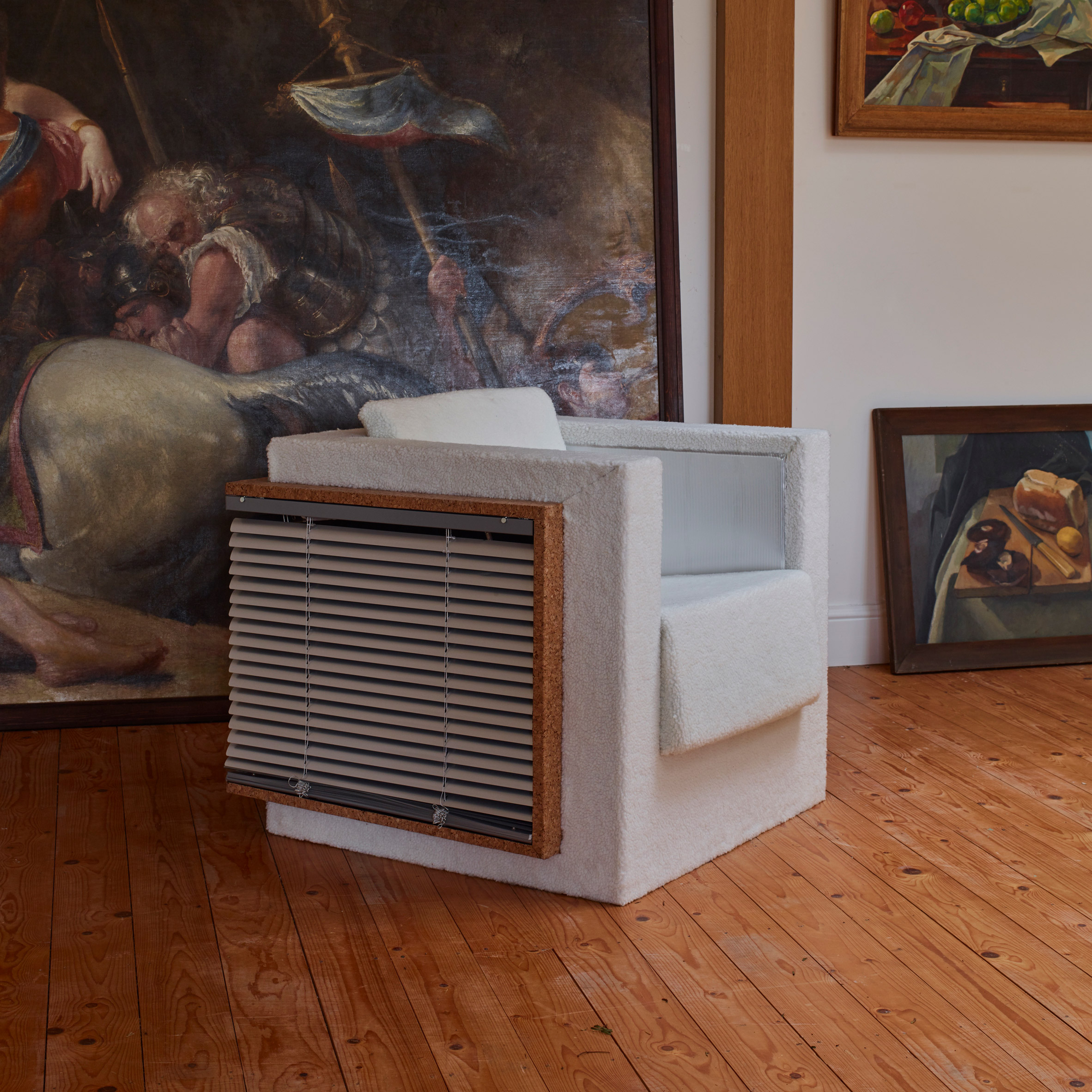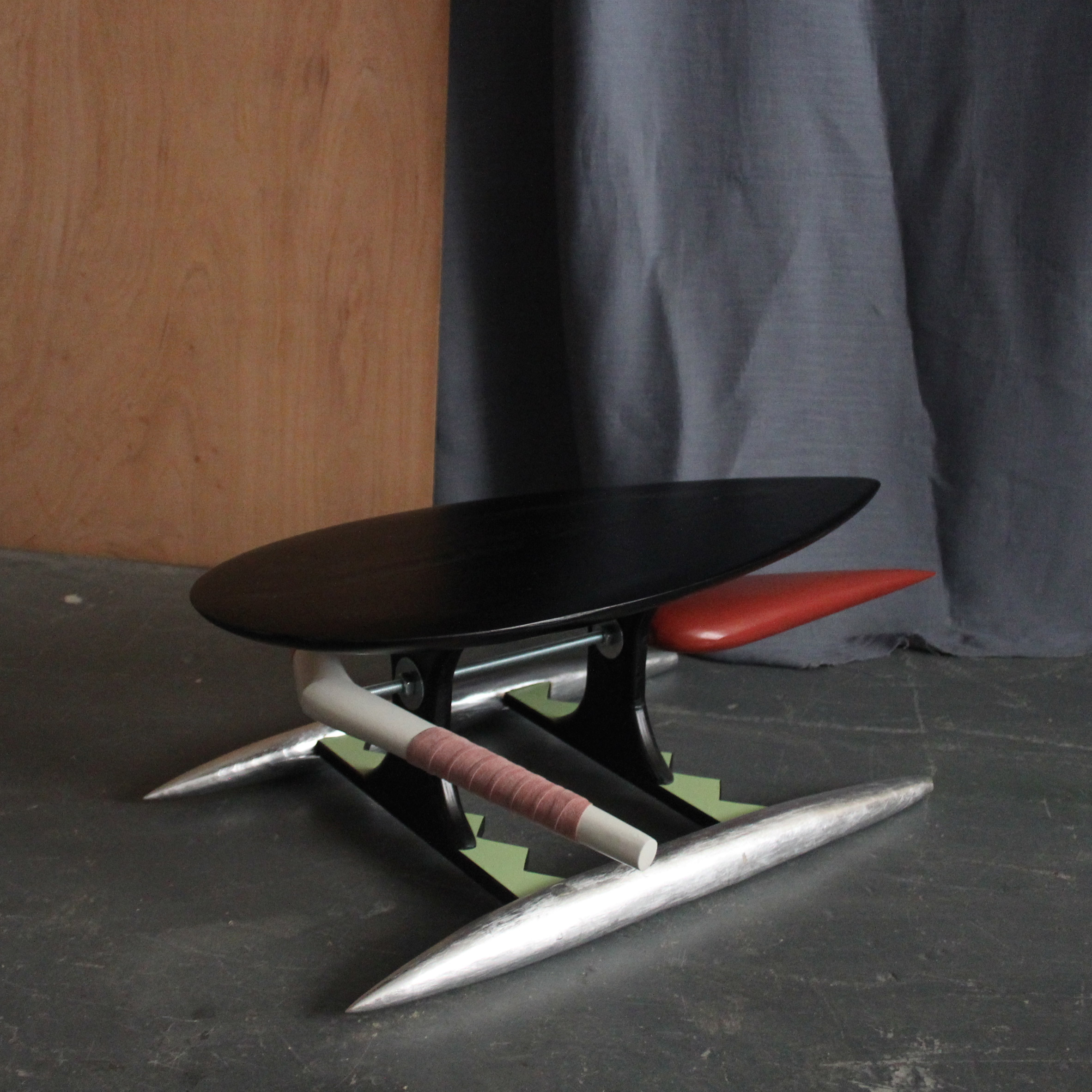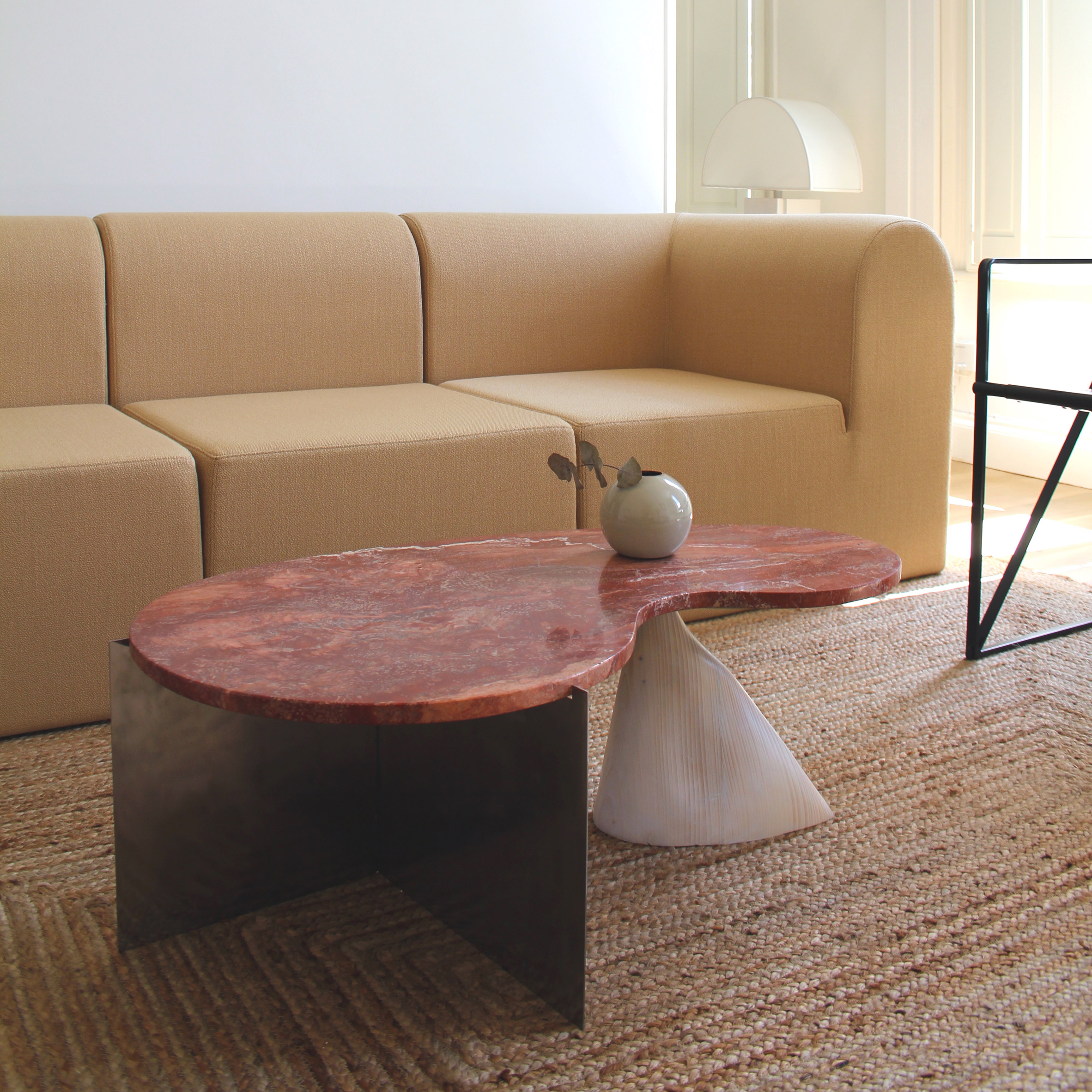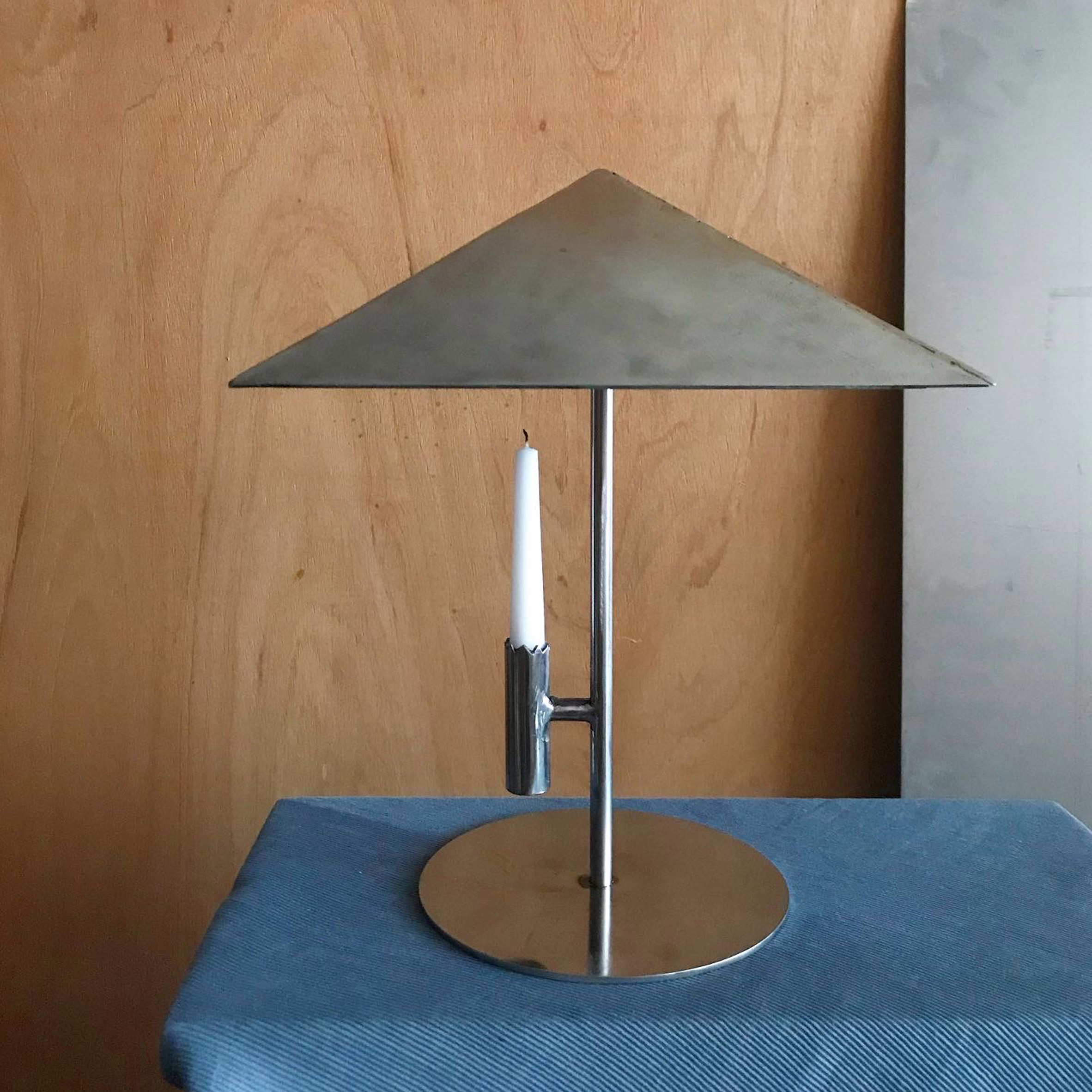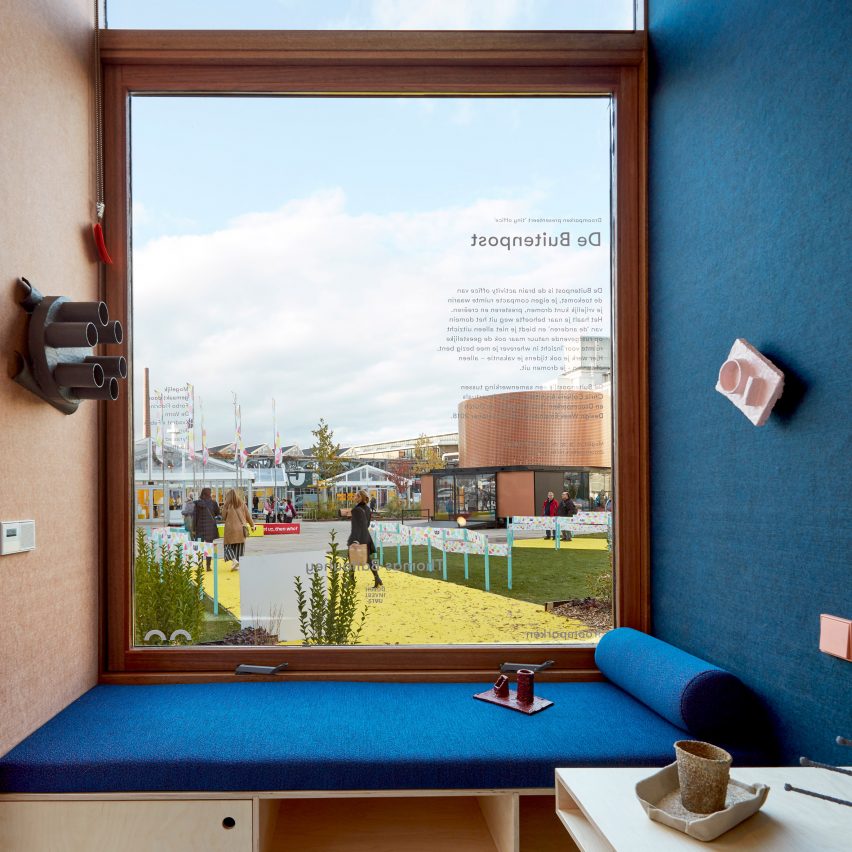
Design studio Dutch Invertuals has created a collection of compact offices made from corrugated aluminium and wood for Dutch holiday park operator Droomparken.
Named Tiny Offices, the small workspaces were designed to be places where you could "freely dream, perform and create". They have been installed in two of Droomparken's holiday parks in the Netherlands.
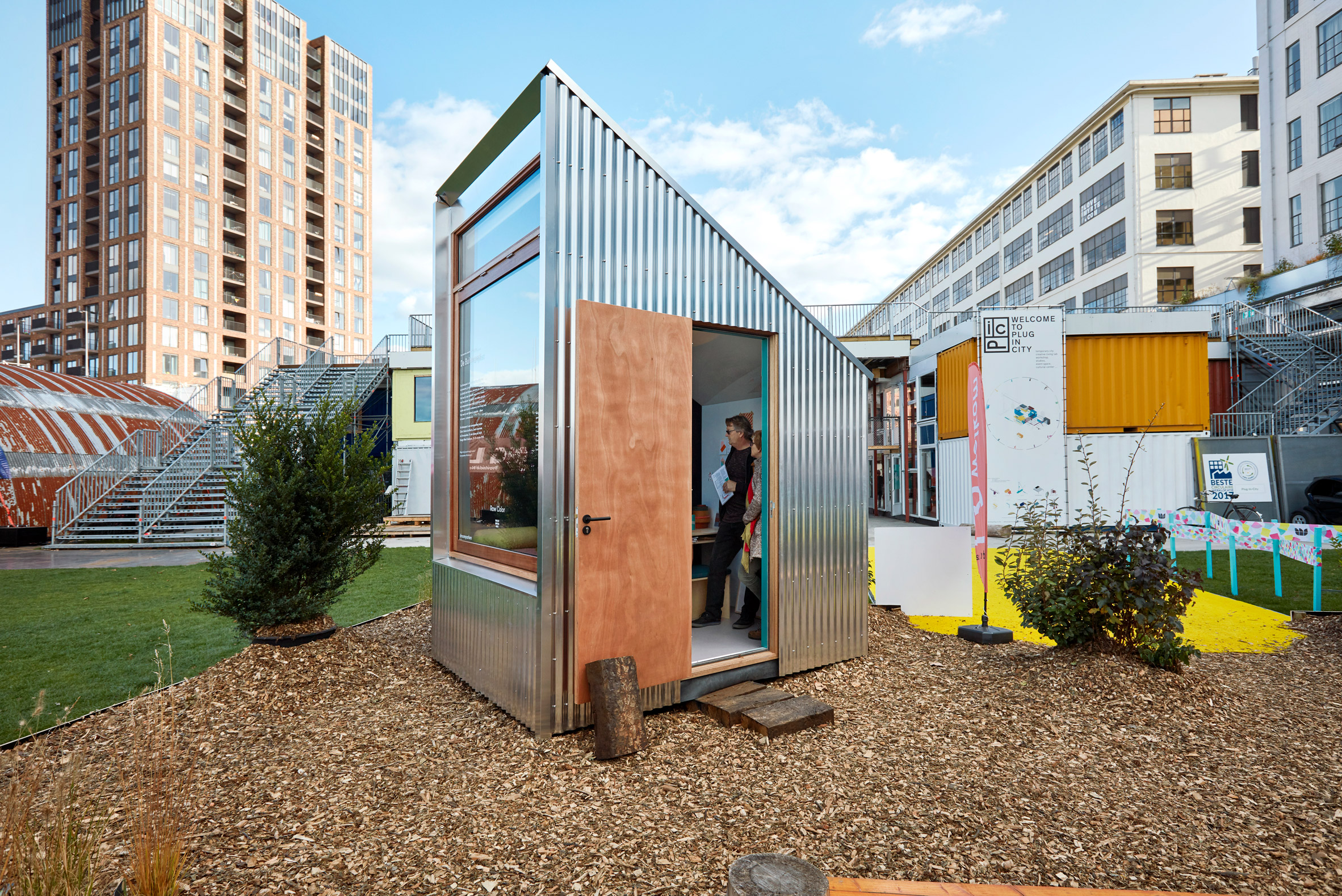
The compact offices measure just over six square metres and were built from raw corrugated aluminium plates, with wooden doors and a large window frame on the front facade.
"The biggest inspiration came from projects which were completely embedded in natural surroundings," said Dutch Invertuals architect Chris Collaris and design director Wendy Plomp.
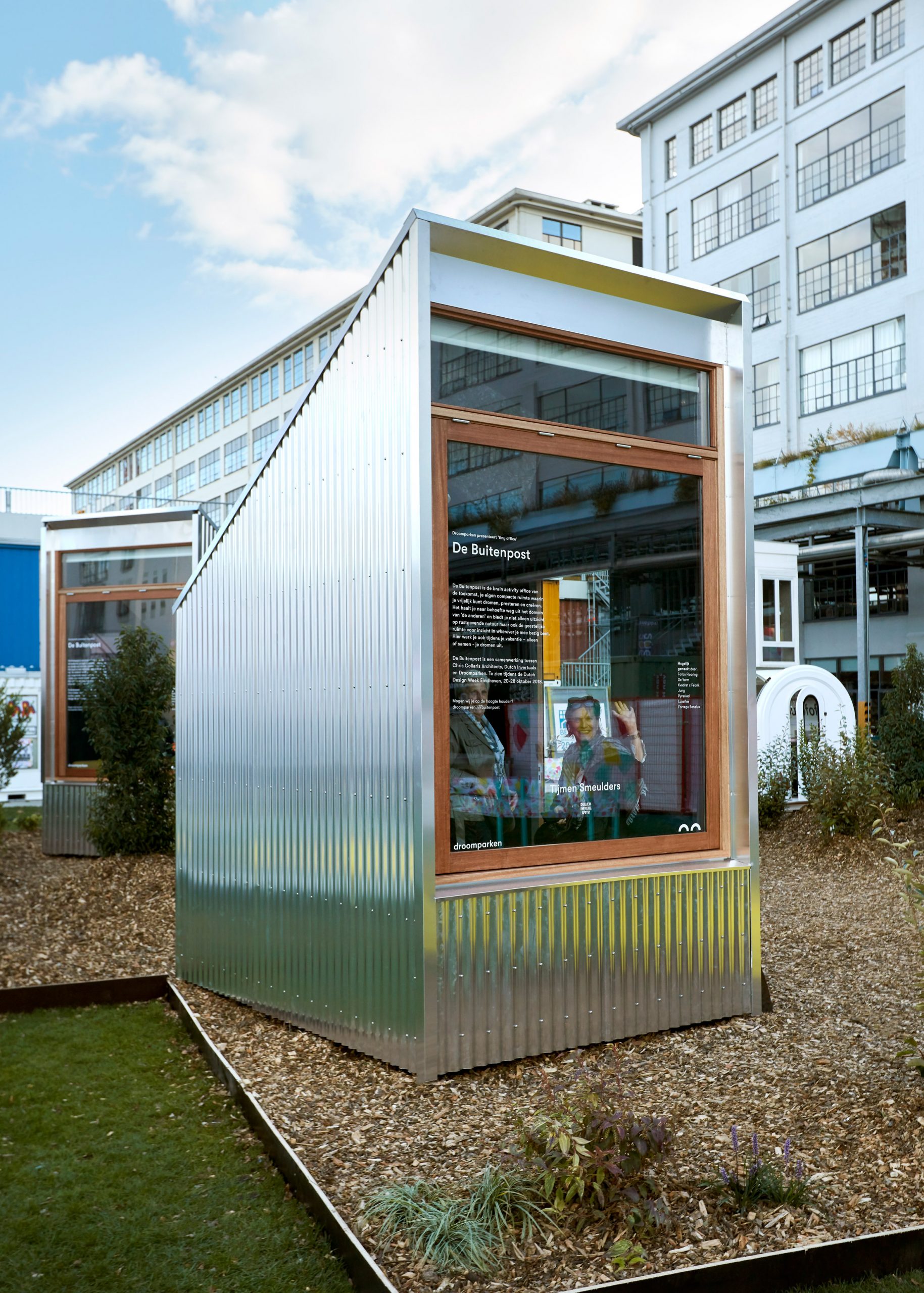
"It's almost an 'end of the world-place' with that big window overlooking it," Collaris and Plomp told Dezeen.
"The actual space itself didn't need to be very big."
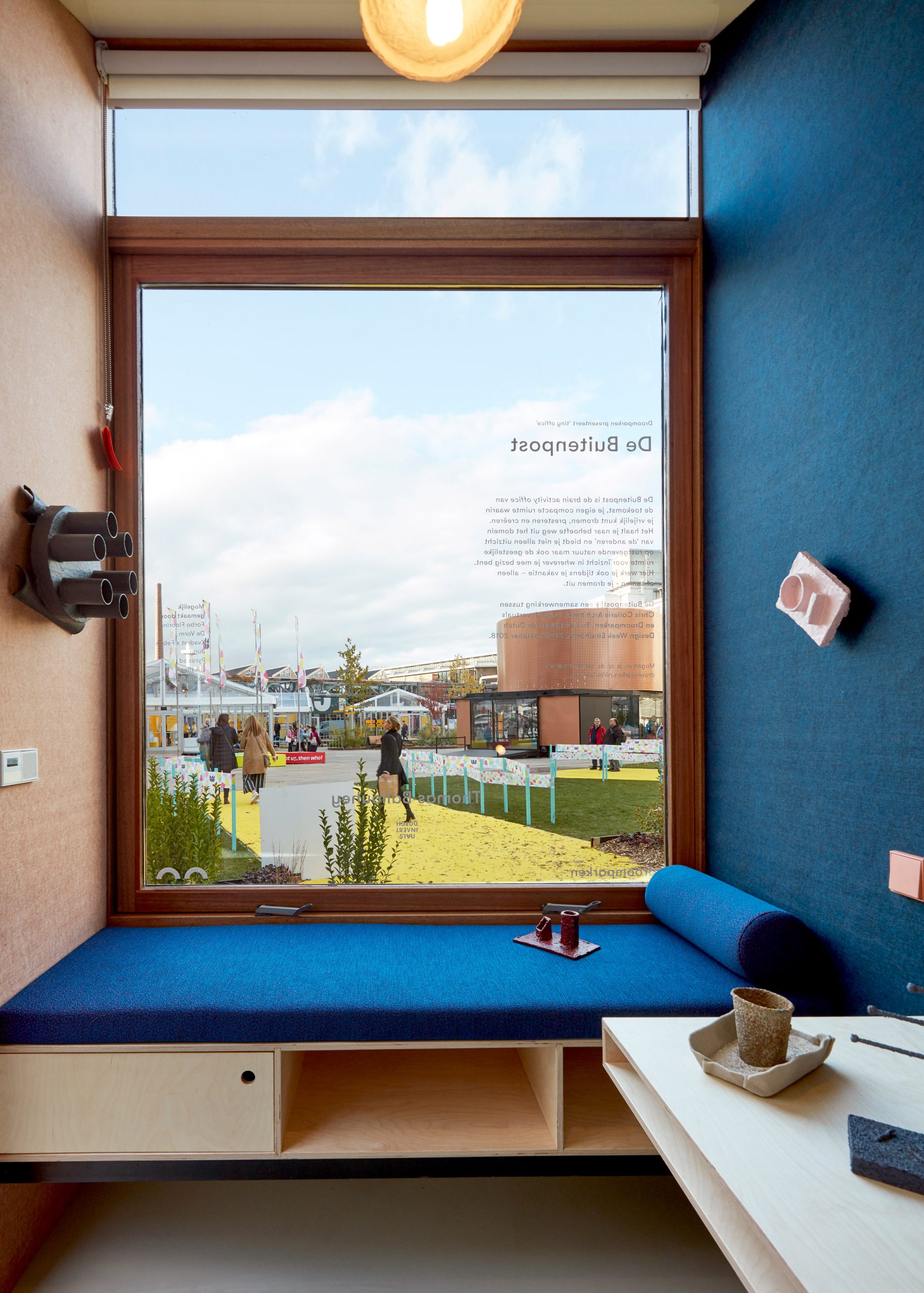
The Tiny Offices have custom-designed interiors in different colours, clad in materials including felt and acrylic that were chosen for their functionality.
"The interiors are designed to create the most optimal work environment, where you can concentrate and work but also lay down on a beautifully designed daybed to think and look outside," Collaris and Plomp explained.
"Because it is a small and intimate space, all materials should make sense. Therefore we used an acrylic wall that makes the space look more spacious, but you can also write on it."
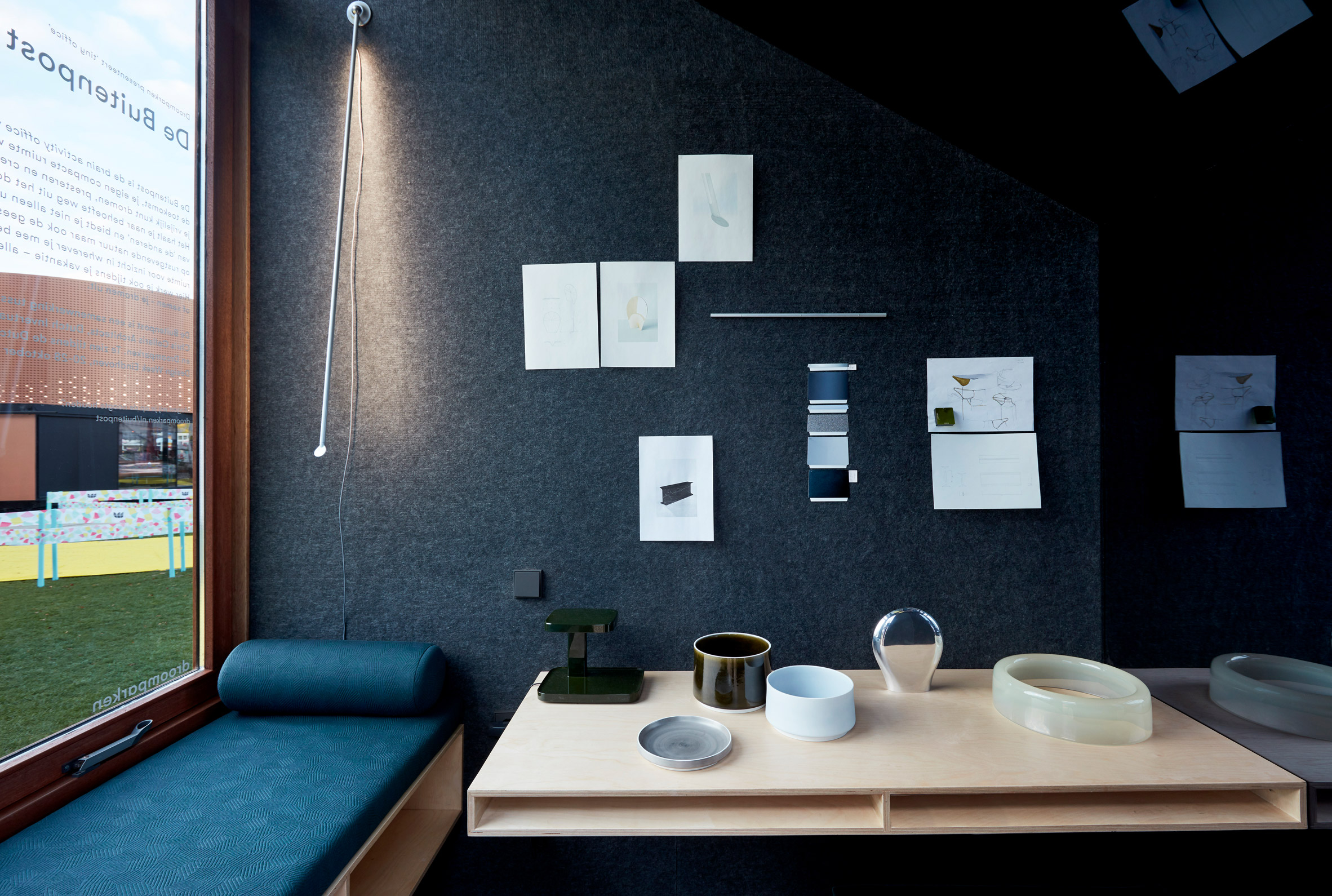
The interiors were designed by three designers Raw Color, Thomas Ballouhey and Tijmen Smeulders.
Each designer created their own colour scheme, with some choosing a colourful identity and some going for darker, more sophisticated hues.
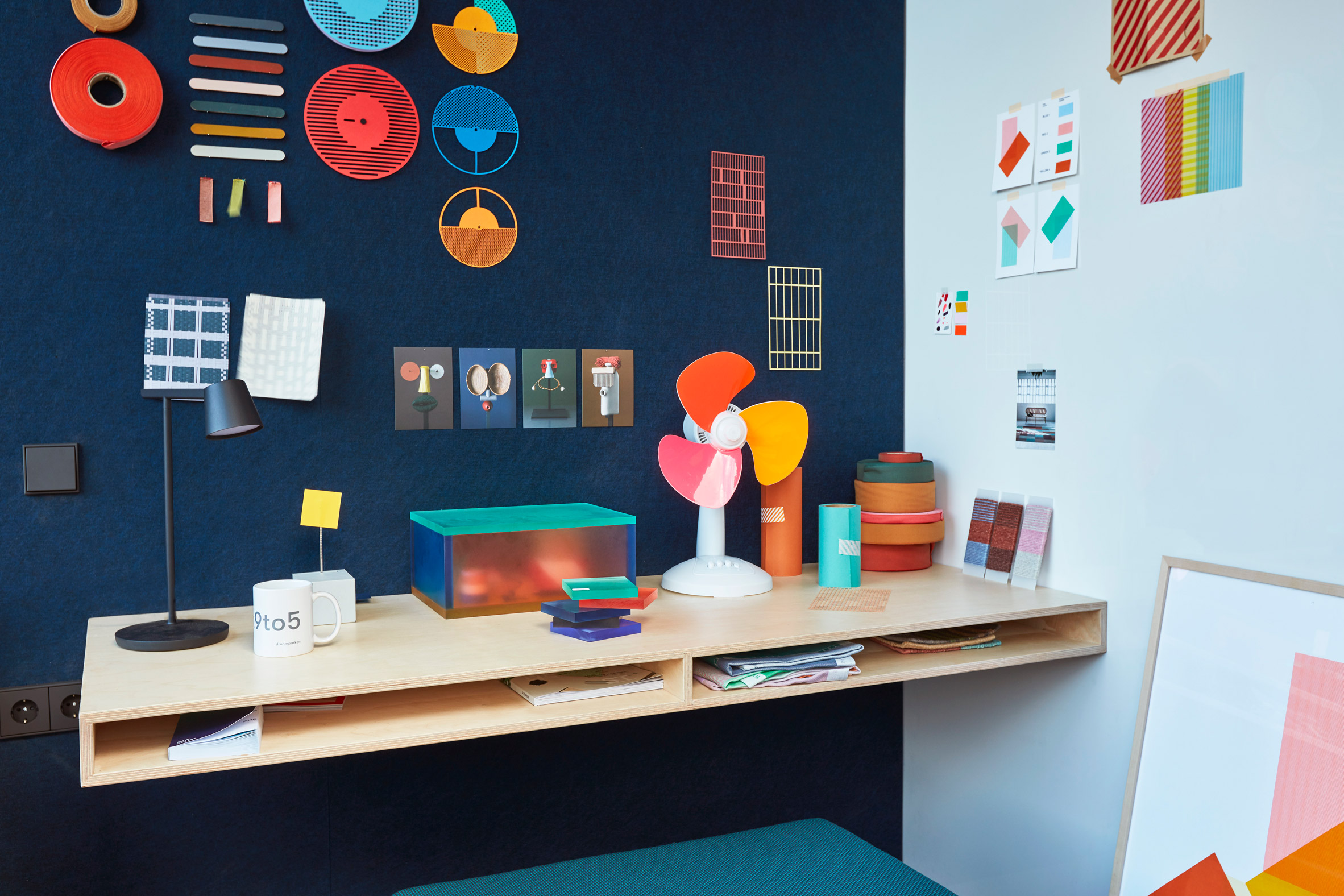
Droomparken, which runs holiday parks across the Netherlands, commissioned the project for Dutch Design Week in 2018 with the aim of creating a space that would be better to work in than a traditional office.
Today there are four Tiny Offices, with more to potentially be installed in the future.
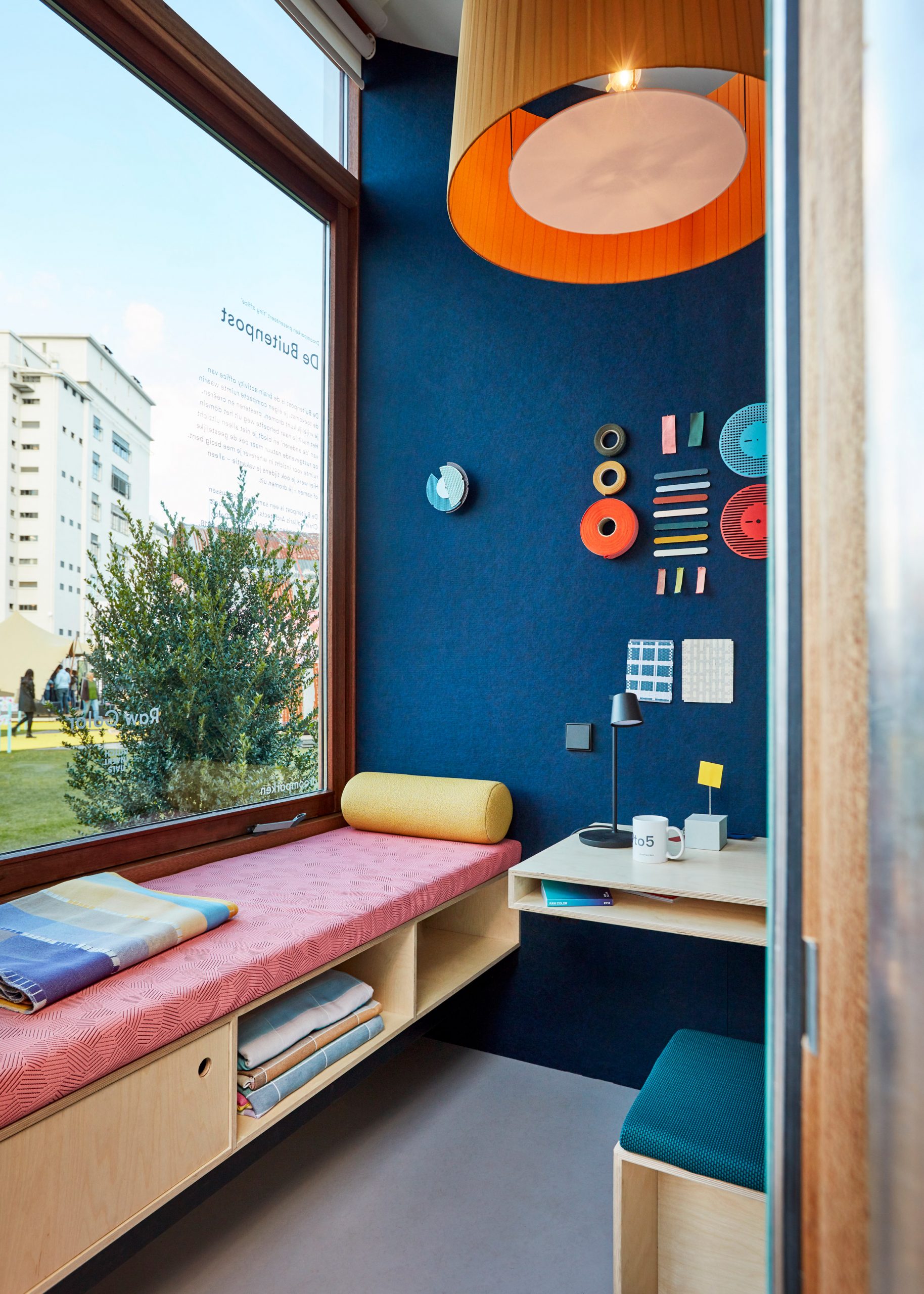
Their project became more timely as the coronavirus pandemic struck.
"In these last years offices have become more green and healthy, but criticism of the modern contemporary office has come to the surface, and today the office seems to be under pressure because of the COVID-19 virus," Collaris and Plomp explained.
"The units got more attention because going to the normal office was not an option any more. Tiny Offices were and are a much safer place than the traditional office."
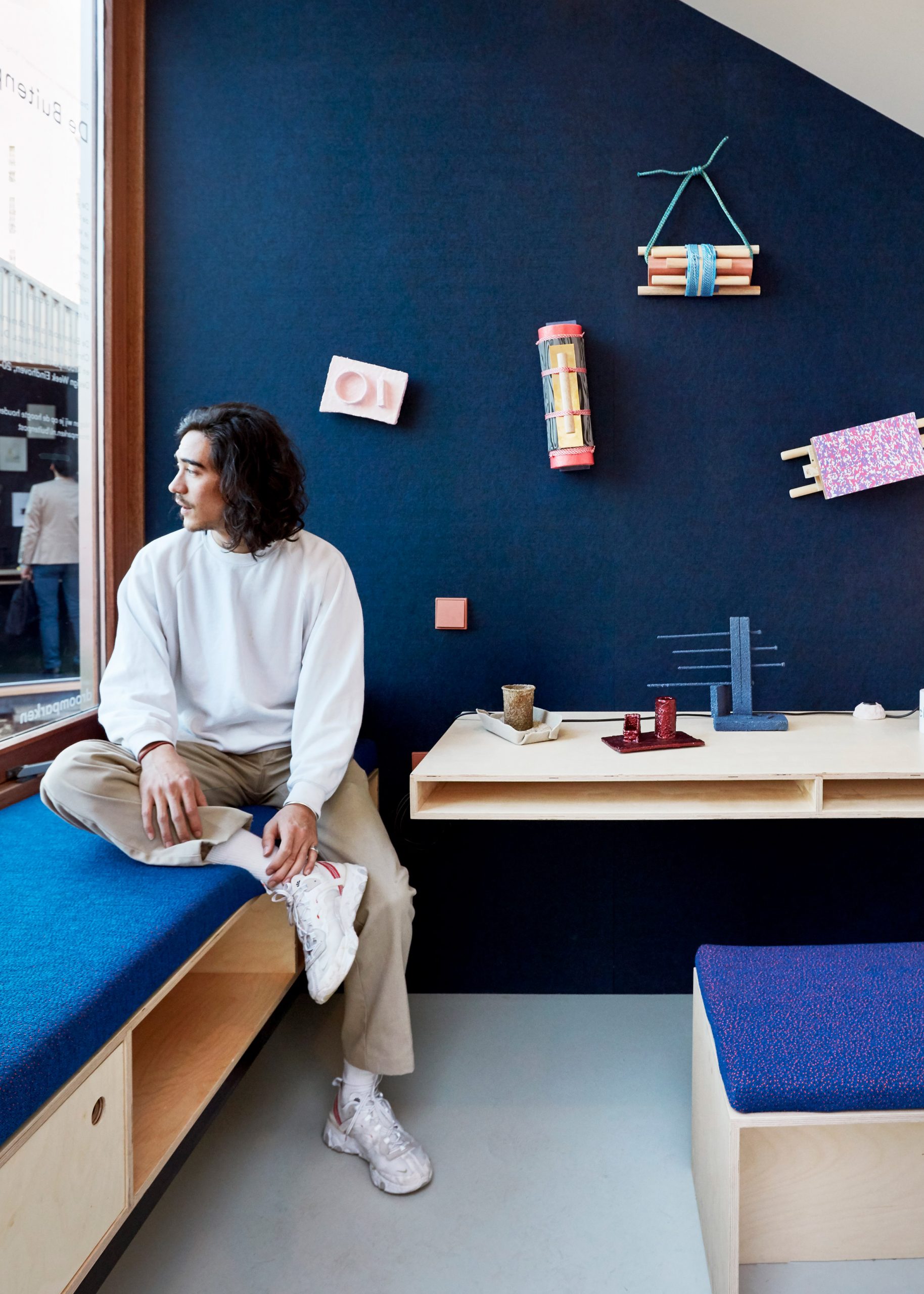
Tiny Offices has been longlisted for the Dezeen Awards 2020 in the small workspace interior category.
Dutch Invertuals previously designed an exhibition celebrating at the circle and experimented with creating products from unwanted household junk to produce less.
The post Dutch Invertuals designs Tiny Offices from corrugated aluminium plates appeared first on Dezeen.
from Dezeen https://ift.tt/2GcxmdH
